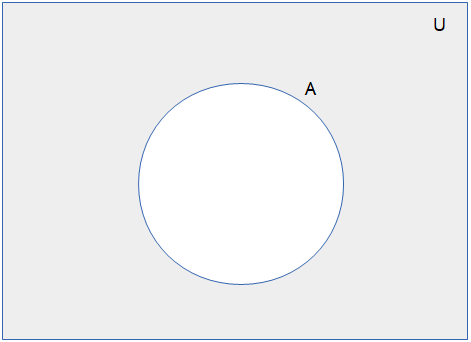Let $X$ and $A$ be sets. Based on the conjunction "\(\wedge\)", and the negation "\(\neg\)", the complement of the subset \(A\subseteq X\) is defined by
\[A^C :=\{x \mid x\in X\wedge x\notin A\}.\]
In particular, $A^C\subseteq X.$ Thus, for a subset $A\subseteq X$, The complement $A^C$ contains all elements \(x\) of \(X\), which are not contained in \(A\).
A set complement can be drawn in a Venn diagram using its universal set as follows:

Corollaries: 1
Definitions: 2 3
Explanations: 4
Proofs: 5 6 7 8 9 10 11 12
Propositions: 13 14